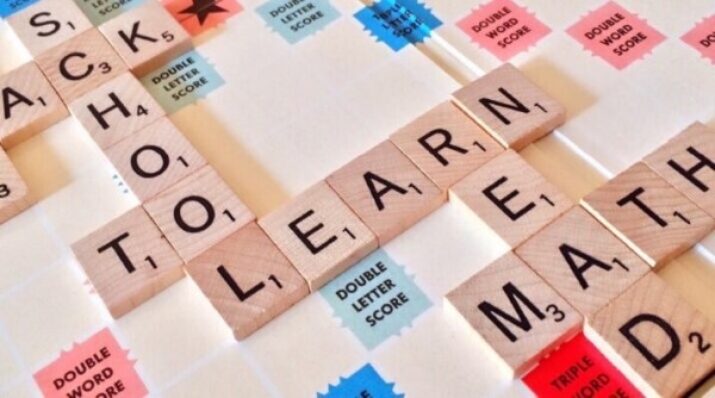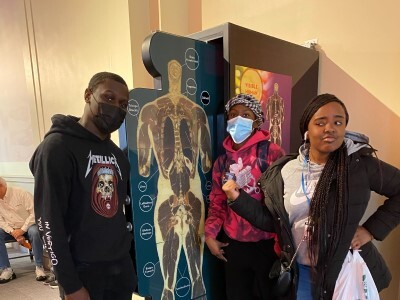Grades vs. Continuous Learning: Learners Are Entitled to the A
Topics

Educators are rethinking the purposes, forms, and nature of assessment. Beyond testing mastery of traditional content knowledge—an essential task, but not nearly sufficient—educators are designing assessment for learning as an integral part of the learning process.
If school communities continue operating in a system that is using grades to laser inscribe value on students—they all deserve the A.
It was the end of first quarter, and I was sitting across the table from a pair of very concerned parents. Their student had struggled so far this year, often falling far short of meeting the expectations for learning. As I began to talk about strategies like fully engaging in learning experiences, thoughtfully completing formative tasks, and revising based on feedback, they became frustrated. Their student had been “doing school” the same way for eight years. This was the first time that the results were different—and the results were indeed very different. They didn’t say it, but it certainly was implied—their child was entitled to the A. What I find to be the most shocking about that statement is that they may have been right.
After working primarily with ninth grade students for most of my 17 years as a science teacher, requests from parents to discuss grades at the end of the first term became part of my annual cadence. During these meetings, parents would quickly realize that the experiences their children were receiving in my class were different from their own high school experience, and they usually left feeling like their students were in good hands. Learners in my class were working on explaining their reasoning, developing possible models based on evidence, adjusting their communication based on the audience, designing products, becoming better collaborators, critically evaluating claims, and beginning to make choices around their own learning needs. They happened to learn quite a bit of science, too!
After 17 years of refining my practice, students in my classes took limited notes, and they certainly didn’t write down things I told them; instead they recorded the understandings that they had collaboratively constructed and revised. To ensure that they grew both academically and personally, I worked hard to create a culture of learning based on relationships, routines, development of needed mindsets, and lots (and lots) of scaffolding. Students heard things like “learning is messy” and “just because you weren’t successful doesn’t mean that you can’t be, so what’s next?” I was confident that students in my classes were developing essential skills needed to walk whatever path their futures held. To the extent possible given school-wide policies, students in my classes were able to revise their work, and grades were based on their final demonstrations of what they had learned. Students who identified as “poor testers” discovered that by focusing on the learning, they could be successful on performance assessments—and more importantly, they valued those experiences! So why were distraught parents landing in my classroom at the end of the first quarter?
Grades, that’s why. Despite my best efforts to focus on growth and continuous improvement, the reality is that all of the feedback I gave was eventually distilled down to a single letter. More importantly, most students and parents have been conditioned to understand that grades reflect timeliness, neatness, effort, and behavior just as much as they do the actual learning. As with most districts, we were working to change that mental model and the underlying systems that perpetuate it, but progress was slow. This disconnect was why concerned parents of learners who were relying on being “good kids” to receive good grades would find their way into my classroom—I had shifted my grading to reflect deep learning and growth, while they were still focused on compliant doing. The conversations would predictably start with some version of the same proclamation from parents: “My child is, and always has been, an A student.” There it is. This one simple sentence says it all. It is the disconnect—the fissure, the crevasse—between educators and students.
A bit of separation has afforded me the opportunity to reflect on this situation from a different perspective. As part of my current work, I have been collaboratively developing a graduate course to support educators in creating more learner-centered and equitable grading practices and systems. While appearing to be a technical topic, the reality is that grading is fundamentally about philosophy, values, and mindsets—why we grade, what we grade, how we grade and what we hope to accomplish through the technical implementation. Being able to shift mindsets requires that we first understand the existing landscape, and that needs to include the perspectives of learners and their families.
Go back to the claim, “My child is, and always has been, an A student.” What does this say about mindsets? It implies a belief that “being an A student” is somehow part of the child’s identity or is an unchangeable trait. It is like saying they have brown hair, or they are the second oldest in the family. It is merely a fact that has not only been accepted, but is pointless to dispute, hence the reason for all those bumper stickers to permanently announce this unchanging designation: My Child is—not “was,” not “could be,” or “will be,” and certainly not “was, then wasn’t, but will be again”—an Honor Student. And every year, a single letter grade informed families that my sterile appraisal of their child suggested that they might need to bust out the scraper to remove that bumper sticker. No wonder they were upset! Why would we expect anything different from students and families?
Let’s start with the perception that grades are static evaluations that educators give and students receive, with little to no input or control. When our grading system was created more than 100 years ago, it was designed around the belief that student ability was pre-determined and their potential was predictable. This mental model of grades aligns with, and is therefore reinforced by, other experiences in our lives.
In the jewelry business, the word “grade” immediately leads to the “4 C’s” of diamonds. (I was a Certified Diamontologist in a previous life, so just indulge me here for a minute.) Diamonds are evaluated against these four areas by three independent appraisers, receiving ratings in each category based on final consensus. Those ratings are permanently attached to that stone with a laser inscribed registration number, never to be questioned or altered. And those ratings determine its value in perpetuity. Or what about something a bit more broadly applicable, like when you select your meat at the grocery store? Have you ever seen “Grade B” beef and thought it would make a delicious meal? Of course not! Anything less than “Grade A” is considered unfit for human consumption. What about car insurance? Not only are there “A-rated” insurance companies, but some are “triple-A rated!” (I might be giving away my age here, as now they are given “stars.”) In all of these situations, the “grade” is given by one party to another. It communicates value and is almost always permanent… and the “A” is the only acceptable rating.
Every time we push a traditional grade upon a student during the learning process (and everything before graduation is during the learning process), we might as well be laser-inscribing another character in their registration number.
One difference between these examples and our existing grading system is that the criteria by which those grades are given are transparent and consistent. All too often, the grades that students receive are contaminated by factors that do not reflect what they know and can do—things like timeliness, behavior, compliance, and attendance—and value the speed of learning over the final demonstration of understanding. In such a system, learners with significant gaps in understanding sometimes still receive A’s and learners who demonstrate their proficiency on a somewhat different timeline receive something less. While my district was actively taking meaningful steps to address these exact issues, changing a K-12 grading system takes time, and during that process, parents would still land in my room at the end of quarter one. The other major obstacle was a complete disconnect between the culture I was creating within my classroom and the message they received from the existing system; I emphasized and celebrated growth over time, while the system elevated singular evaluations at arbitrary intervals. These reflections and arguments strengthen my resolve around the original statement: Learners are entitled to the A.
In our existing traditional system, grades are perceived by students and their families as permanent assignments of value and predetermined potential that open, and close, opportunities for them. If we value our students, which we do, we need to find value not only in what they have accomplished, but also in what they could accomplish in the future. They are humans on a lifelong journey and are capable of meaningful growth. We need to find ways of celebrating their stories, including those compelling moments often found in their struggles along the way to success. Their current chapter is never the last and simply serves as a guide for the next.
So how do we move to a grading system that tells the unique story of each learner, that celebrates their process, and leaves room for the journey ahead? Simple.
Stop grading students.
The act of grading as we know it has too many preconceptions, too many inequities, and too many emotions attached to it to sufficiently change it. If we simply shift grading practices, we risk carrying those encumbrances forward. So abandon it, and replace it with what learners actually need.
Our students need us to partner with them to co-create their communication of their story. Yes, I am implying that we stop grading learners and instead work with them to document the ways in which they have grown against desired outcomes and where they intend to go next. I am not saying that we shouldn’t give honest feedback or clearly communicate where they are in relation to important milestones. That is part of communicating the journey. Our challenge will be to allow the technical components of recording and synthesizing data to honor the fact that learning is a fluid process catalyzed through trial and error. This brings me back to another point—on the surface, grading is a technical challenge, but is fundamentally about mindsets. If we want to create the technical systems that will support learners, then we should start with values, dispositions, and mindsets to create our design parameters:
- What outcomes do we expect and value?
- What evidence will we use to inform progress? How much do we need and how will we ensure validity and reliability?
- How will we provide space for the natural iterative process of learning and the unique path and timeline for each learner?
- What will teaching, learning, and assessing need to look like?
- What does this mean for culture and relationships?
- What mindsets and dispositions are needed within each stakeholder group?
Each community has, or should be working toward developing, a vision for their graduates—what they want each graduate to know, be able to do, and be like as they enter into the next phase of their lives. Learners need a system that guides them through that journey. We need to ground our actions in the belief that all students can learn and embrace the philosophy of learning as constant and time as the variable. We need to create a new system, a system that values growth, elevates potential, and speaks to what is possible. Until then, if we continue operating in a system that is using grades to laser inscribe value on our students—they all deserve the A.
This article first appeared on the 2Revolutions blog on February 6, 2023. Image at top by Wokandapix.




